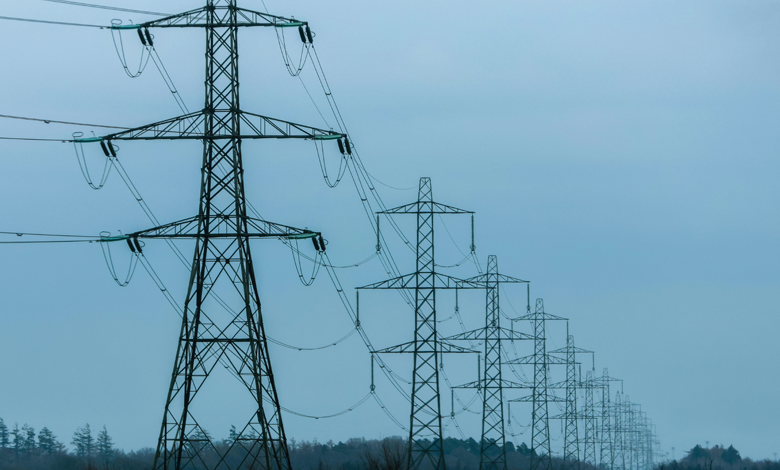The Planning Act and Irish infrastructure

The Planning and Development Act has added a new dimension to the challenge of meeting Ireland’s infrastructure requirements.
In late 2024, Irish planning legislation saw its biggest overhaul in a generation at the conclusion of the Fianna Fáil-Fine Gael-Green Party triparty administration. At the heart of this reform were two monumental projects: the Planning and Development Bill Act 2024, and the First Revision of the National Planning Framework (NPF).
These initiatives emerged in response to a planning system which construction industry leaders described as being plagued by legal and procedural hurdles, a lack of consistency, and outdated legislation.
However, the factors informing these changes were broader; shaped by Ireland’s ambitious climate targets, rapid population growth, and the necessity of sustainable urban development.
The Planning and Development Act, the third-largest bill in the history of the State, marked a fundamental shift in Ireland’s planning system. This legislative reform aims to streamline the decision-making process, provide clarity for stakeholders, and introduce mandatory timelines for key consenting bodies such as An Bord Pleanála, which is soon to be reconstituted as An Coimisiún Pleanála.
Claragh Mulhern, who holds responsibility as Head of Business Unit Adviser level for the provision of professional planning advice within the Department of Housing, Local Government and Heritage, spoke to eolas Magazine in 2024 about the need for planning reform and how it will affect policymaking.
From a DHLGH perspective, Mulhern emphasises that the then Bill’s primary goal was to shift from a development-focused approach to a plan-led planning system, providing clarity and consistency for all stakeholders, including developers, local communities, and policymakers.
Key changes, she lists, include:
• 10-year development plans: Local authorities are tasked with creating longer-term plans, replacing the previous six-year cycle, allowing for more coherent and sustainable development strategies.
• Mandatory timelines for decisions: Particularly for large-scale infrastructure and renewable energy projects, the reforms introduced specific deadlines to improve efficiency and predictability.
• Restructuring governance: New governance arrangements for An Coimisiún Pleanála aimed to restore trust and efficiency in the planning process.
These legislative changes also seek to align Ireland’s planning system with its obligations under the Aarhus Convention, ensuring robust public participation and transparency while addressing challenges in judicial reviews.
Mulhern says that the aim of judicial review reforms was to make the planning process “more efficient, streamlining procedures while protecting citizens’ rights to challenge planning decisions”.
National Planning Framework
Running parallel to the legislative overhaul was the First Revision of the National Planning Framework, which began in 2023. Mulhern says this was driven by several key factors, including the climate transition and goals under the 2018 Climate Action Plan, updated demographic projections, and the need for better alignment between national and regional development plans.
One of the revised NPF core objectives was to address Ireland’s population distribution challenges by accounting for compact growth and reducing urban sprawl. Mulhern says that the aim of the framework was to align to Climate Action Plan (CAP) targets, focusing on sustainable development practices that reduce greenhouse gas emissions.
The revised NPF incorporated updated sectoral emissions targets and enhanced collaboration with other government departments, such as the Department of the Environment, Climate and Communications (DECC).
Notably, the NPF accounts for the alignment of public transport infrastructure and green energy development with population growth, ensuring that infrastructure investments are strategically located to support sustainable communities.
Energy and climate
A significant aspect of the reforms was the integration of Ireland’s renewable energy goals into the planning system.
Mulhern says that a key consideration in the reform process was the importance of providing clarity on where and how renewable energy projects – such as onshore wind and solar farms – could be developed.
This clarity, achieved through the alignment of the NPF with Climate Action Plan 2024 (CAP24), aimed to provide developers and communities with the certainty needed to meet the country’s ambitious climate targets.
The review process also considered regional capacity assessments, ensuring that national energy targets could be broken down into actionable regional policies. This approach is described by Mulhern as critical to balance Ireland’s energy demands with environmental considerations and local community interests.
Speaking to eolas Magazine in November 2024, the head of Bord na Móna, John Reilly, said: “We do not have an energy problem in Ireland; we have an energy infrastructure problem. The energy transition, globally, is going to cost trillions of dollars. In Ireland, it is going to cost billions of euros, but it is a transition, which, if done properly, can bring enormous benefits to the economy.
“The entire cost of the upgrading of our infrastructure should not fall on the rate-paying base of electricity consumers. The current mechanisms used today to pay for our energy infrastructure must be examined. It was an interesting and positive development that the previous Government utilised a portion of the Apple tax revenue and put it on the table on behalf of the State to develop our grid infrastructure.
“We must look at innovative ways in which the delivery of grid infrastructure – both transmission and distribution – can be accelerated, and a key part of that is deciding how it is paid for and by whom. It may seem counter intuitive but if we significantly increase demand for green electricity as a core element of this energy transition, we will significantly reduce the unit cost of electricity for all consumers, in spite of the significant investment in infrastructure that is required.”
Acknowledging the challenges posed by planning, Reilly stated that one of the State’s major challenges is “delivering the power lines necessary to move power across the country from where it is generated to the major demand centres on the eastern seaboard”.
Therefore, he says: “We must utilise the capacity currently available on grid infrastructure we have developed in the regions and bring the demand closer to the supply. Acknowledging this opportunity to co-locate assets on a single site is something which will unlock major benefits for the wider energy system and consumers.”
Public participation and expert collaboration
Again, from a DHLGH perspective, public engagement was central to the revision of the NPF and the legislative reform process. Mulhern highlights the key role played by the Planning Advisory Forum in facilitating dialogue between government bodies, expert groups, and the general public.
Referencing the establishment of an expert review group, which included figures such as Frances Ruane (Chair of the National Competitiveness and Productivity Council), Laura Burke (Director of the EPA), and Brendan O’Sullivan (Head of Planning at UCC), the DHLGH official suggests that the revision of the NPF was informed by a diverse range of perspectives, addressing associated challenges in housing, infrastructure, and climate resilience in a “holistic manner”.





